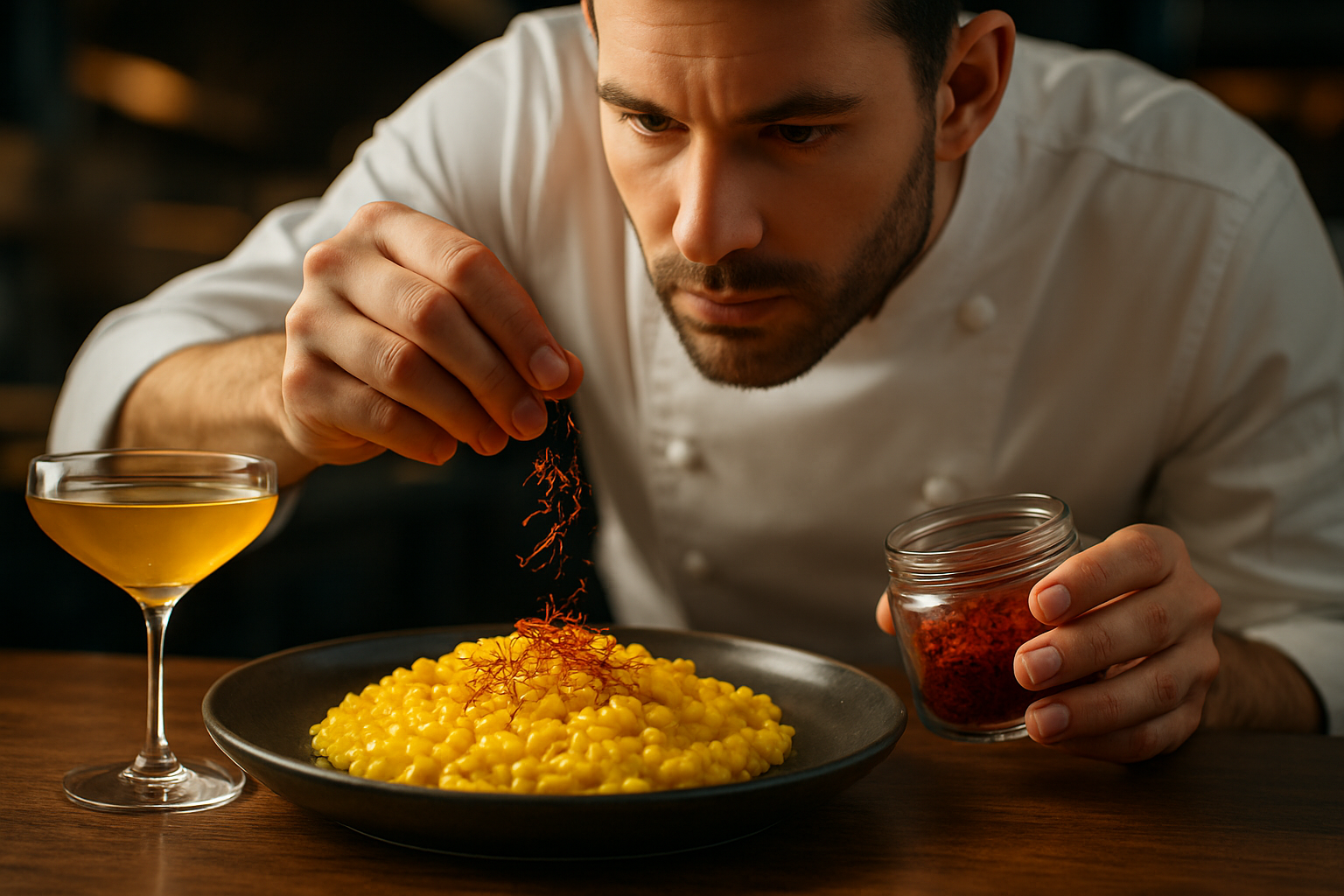Saffron's Sizzling Comeback: The Spice That's Spicing Up Modern Cuisine
Prepare your taste buds for a golden revolution! Saffron, the world's most expensive spice, is making a dazzling comeback in kitchens worldwide. From haute cuisine to home cooking, this ancient flavor enhancer is finding new life in unexpected dishes and drinks. Join us as we explore the resurgence of saffron and discover how this delicate spice is adding a touch of luxury to everyday meals.

This resurgence is driven by several factors. First, increased global trade has made saffron more accessible to consumers worldwide. Second, the rise of food culture and the quest for unique flavors has led chefs to experiment with this ancient spice in new ways. Lastly, recent studies highlighting saffron’s potential health benefits have piqued the interest of health-conscious foodies. As a result, saffron is now gracing everything from craft cocktails to artisanal ice creams, proving that its versatility knows no bounds.
Breaking Culinary Boundaries
Saffron’s comeback is marked by its appearance in unexpected culinary creations. Innovative chefs are using it to add depth and complexity to dishes that traditionally never featured the spice. For instance, saffron-infused chocolate truffles are becoming a hit in high-end patisseries, offering a unique twist on classic confectionery. In the beverage world, saffron lattes and saffron-infused gin are emerging as trendy alternatives to more conventional drinks.
But it’s not just about novelty. Saffron is also finding its way into fusion cuisine, bridging culinary traditions from different parts of the world. Imagine a saffron-spiced tandoori chicken pizza or a saffron-infused crème brûlée with cardamom – these dishes represent the exciting possibilities when cultures collide on the plate. This spice’s ability to complement both savory and sweet flavors makes it a versatile tool in the hands of creative cooks looking to push culinary boundaries.
The Home Cook’s Golden Ticket
While saffron has long been associated with fine dining and complex recipes, its current revival is making it more accessible to home cooks. As knowledge about using saffron spreads, amateur chefs are becoming bolder in their experimentation. Simple yet elegant dishes like saffron-roasted vegetables or saffron aioli are allowing home cooks to add a touch of luxury to everyday meals without breaking the bank or requiring advanced culinary skills.
Moreover, the rise of meal kit services and gourmet grocery stores has made it easier for consumers to access high-quality saffron and pre-measured quantities, eliminating the intimidation factor often associated with this precious spice. This accessibility, coupled with an abundance of online recipes and cooking tutorials, has democratized saffron use, inviting a wider audience to explore its culinary potential in their own kitchens.
Saffron’s Health Halo
Beyond its culinary applications, saffron is gaining attention for its potential health benefits. Recent studies have suggested that saffron may have antidepressant properties, improve mood, and even aid in weight loss. These findings have sparked interest among health-conscious consumers looking to incorporate functional foods into their diets.
The wellness industry has quickly caught on, with saffron supplements and saffron-infused products hitting the market. From saffron teas claiming to promote relaxation to skincare products touting its antioxidant properties, the spice is now crossing over into the realm of health and beauty. This multifaceted approach to saffron use is further cementing its place in modern lifestyles, appealing to those who seek both flavor and function in their food choices.
Sustainability and Ethics in Saffron Production
As saffron’s popularity grows, so does the conversation around its production. The labor-intensive harvesting process, which requires hand-picking the delicate stigmas, has raised questions about worker conditions and fair trade practices. In response, there’s a growing movement towards ethical saffron production, with some companies offering transparently sourced, fair-trade certified saffron.
Additionally, sustainable farming practices are being developed to increase saffron yields while minimizing environmental impact. These efforts not only aim to make saffron more accessible but also to ensure that its production benefits local communities and ecosystems. As consumers become more conscious of the origins of their food, the story behind saffron production is becoming as important as the spice itself, adding another layer to its appeal in the modern culinary world.
Saffron Savvy: Tips for Aspiring Saffron Chefs
-
Always purchase saffron threads rather than powder to ensure authenticity and maximize flavor.
-
A little goes a long way – most recipes only require a pinch (about 20 threads) for a full flavor impact.
-
Steep saffron in warm water or broth for 10-15 minutes before adding to your dish to release its full flavor and color.
-
Store saffron in an airtight container away from light and heat to preserve its potency.
-
Experiment with saffron in unexpected dishes like smoothies, baked goods, or even homemade pasta for a unique twist.
In conclusion, saffron’s comeback is more than just a passing trend – it’s a rediscovery of a timeless spice that’s finding new relevance in the modern culinary landscape. From gourmet kitchens to home stoves, saffron is adding its golden touch to a wide array of dishes, drinks, and even wellness products. As we continue to explore its potential, one thing is clear: saffron’s story is far from over. Its renaissance is just beginning, promising a future filled with golden possibilities for food lovers and innovators alike. So, why not grab a pinch of this magical spice and start your own culinary adventure? The world of saffron awaits, ready to transform your cooking from ordinary to extraordinary.




